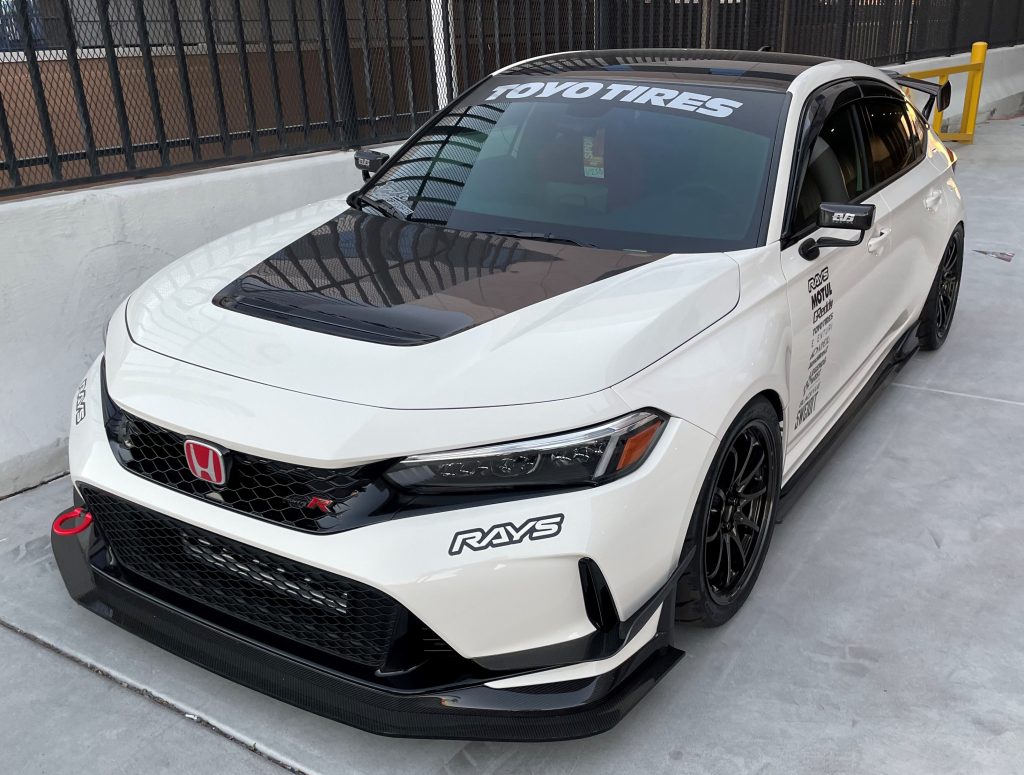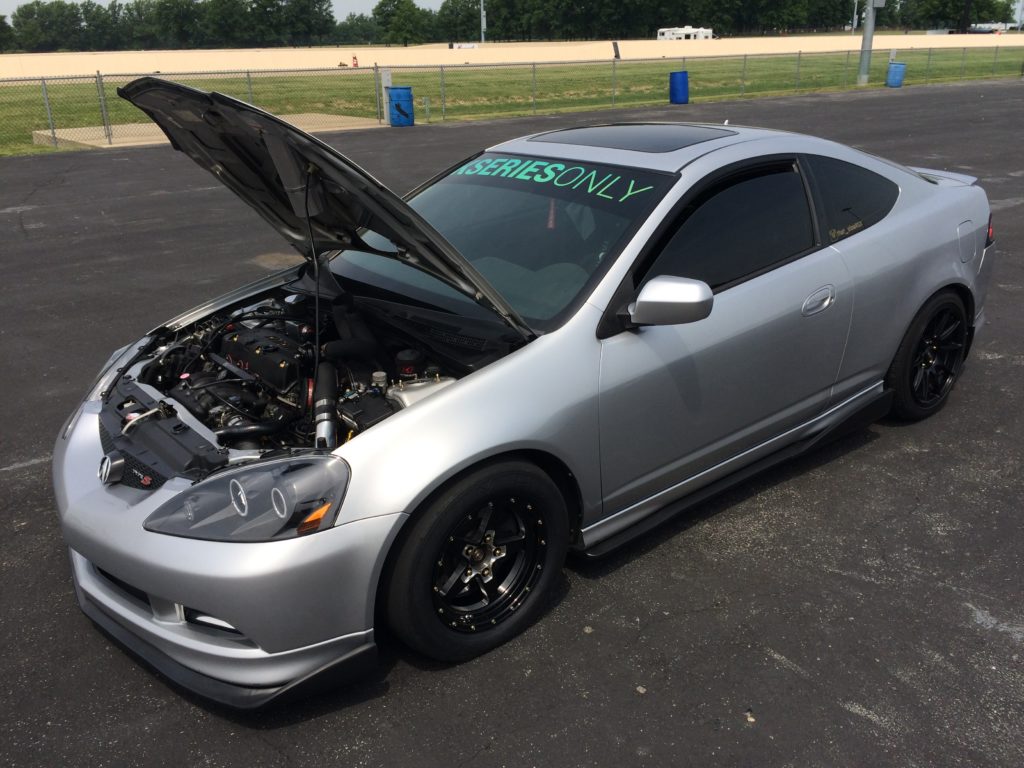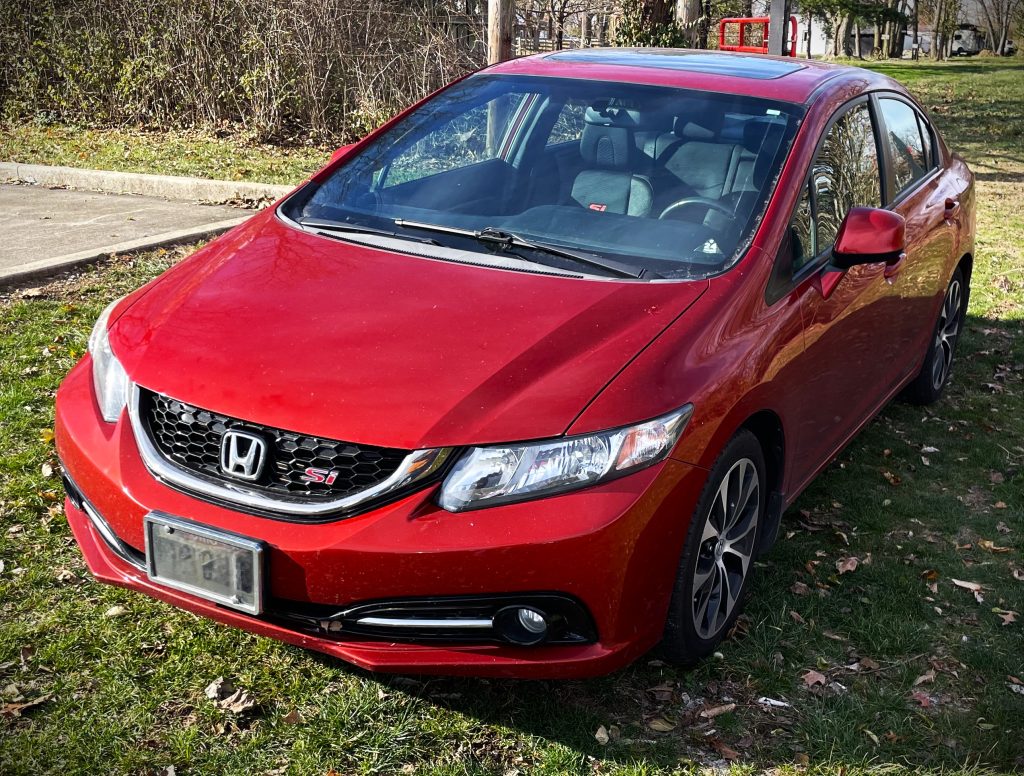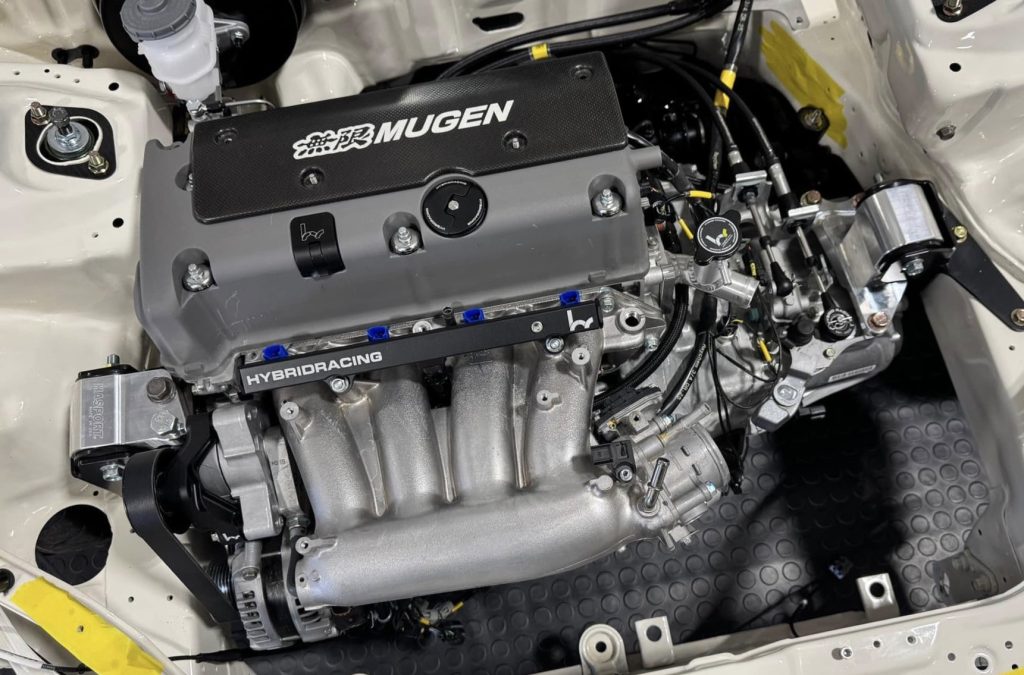Over two thousand horsepower. Proven 1/4 mile ETs in the sixes…and sometimes the fives. Boosted to the moon. You’ve probably got a good idea of what engine we’re talking about, and if we had to bet, it’s because you read the title of the article.
That’s right: the Honda K-series.

Understanding the Honda K20 & K24 K-Series Engines
Here’s a quick distinguisher between the two most common K-series engines:
The Honda K20 is the smaller of the two popular K-series engines, clocking in at two liters of displacement. K20s are a common choice for high-RPM or high-boost builds.
The K24 is the 2.4 liter version, with a longer stroke and slight overbore. K24s are generally the go-to for builds requiring more down-low torque, but boost is still common.
Now, we certainly aren’t suggesting that you can simply bolt a monster turbo onto any old K20 and make four digit power (at least, not for very long). But the Honda K-series engine has certainly worked its way into the hearts and souls of performance enthusiasts to a huge degree.
But what is it about the K-series that makes it so beloved? How did we get here? Why would someone want to use something like a K-series instead of, say, an LS?

Meet David Cordell from Hybrid Racing
To help us answer those questions, we spoke with David Cordell at K-series specialist Hybrid Racing.
Hybrid Racing cut its teeth making parts for the then-new K-series, when the bona fide OG B series was the king of Honda performance. David gave us some insight into the transitionary period between the B series and K-series.
“At the time, the B-series, the legendary engine from the ‘80s and all throughout the ‘90s and early 2000s, was coveted as one of the best,” says David. “With the B-series, you have many parts that are compatible with other models. You can use an engine mount from this, or a wiring harness from that. The K-series was different because there were a lot of products that didn’t exist.”
As with most new, unproven technology, the K-series had to earn its following. Luckily, Honda tuners got their hands dirty and started learning the ins and outs of the new engine. Improvements were quickly noticed, especially when it came to the capabilities of the new technology.
David tells us: “People weren’t necessarily scared of the new K-series technology, but maybe didn’t understand it. But we saw the specs…it ran on a new ECU, there’s no distributor, it had VTEC on both camshafts. There’s a lot of technology where the K had a clear advantage.”
Why Choose a Honda K-Series Engine for Your Project
So, the K-series brought modern technology to the sportier vehicles in Honda’s lineup, namely the Honda Civic Si and Acura RSX. But technology alone isn’t enough to convince enthusiasts to convert their vehicle to a whole new engine.

As David tells us, “There are a number of things that make the K-series so appealing. Most important I think is cost. They are very affordable. Second is production and availability. There’s tons of them out there.”
He’s not kidding. The K-series has been installed in millions and millions of Honda vehicles since its release over 20 years ago. “Third is reliability, which goes along with performance potential and aftermarket support.”
Modern tech, affordability, availability, and a high performance potential are all great attributes to have. But there are lots of engines with that sort of pedigree: the Gen III Hemi, Coyote 5.0, and GM LS are some that come to mind immediately. So we asked David his thoughts on what kinds of projects would benefit from a K-series as opposed to a typical domestic V8. Here’s what he had to say:
“Availability and affordability are a big part of switching to a K-series.
“For Hondas, the cost to build a B series is now more than what it costs to build a K-series. Another instance where you’d choose a K-series is if weight is a primary concern, or your available space is very limited. For example, front wheel drive or mid engine or transverse engine setups. You can put a K-series in the back of a Lotus or a Toyota MR2. K-series Porsches have even been becoming more and more popular because they’re compact and the power potential is there.”
Picking & Planning Your Engine Project
If you’re considering putting a K-series into your own project, you’re not alone. Thousands upon thousands of fans have made the switch to K power in their own vehicles, from obvious recipients like the Honda CRX or Civic to more obscure ones, like modern Minis, Fiat X1/9s, and E30 BMWs. But no matter what platform you choose, you’ll still need an engine, so we asked David where you should look. Here’s what he told us:
“My advice to someone wanting to do this is to look for a 2002-2014 engine. Focus on the Civic Si, TSX, and pre-2012 Accord. The 2015 K changed over to more of a fuel-efficiency focus, so the power potential and compatibility becomes a problem.”

So, you have a car and an engine: now you just need a plan. Part of the appeal of the K-series is vast aftermarket support from brands like Hybrid Racing. As with any project, it’s important to plan the work and work the plan. Consider your end goals, and compare that against your budget when deciding how you want to build your K.
Are you hunting for huge boost? Do you want a screaming, high-revving naturally aspirated setup?
There are tons of opportunity depending on what you want to do. David echoed this sentiment when we asked about common planning for K-series builds, as well as common issues to watch out for. Here’s what he told us:
“There really aren’t any roadblocks, you just have to do your research. The first question: what are you doing with the engine? Will it be supercharged? Turbocharged? All motor? Will it be front wheel drive or rear wheel drive? What is your end goal? One common mod, especially for racing, is using a K20 oil pump in a K24. The K20 pump is smaller, lighter, has no balance shaft, and can theoretically sustain oil pressure at higher RPM (than the stock K24 pump). Everything bolts on, with only some mild shaving of the webbing. It’s also worth considering a baffled oil pan for racing use, if you’re on track.”
Honda K-Series Engine Resources
Is a Honda K-series right for your project? Ultimately, that’s for you to decide. If you want stump-pulling torque in a Bronco or Blazer, the K-series probably isn’t the choice for you. But if you want a lightweight, compact, affordable, high-revving or high-boost screamer, perhaps the K-series would be right at home between the frame rails of your EG Civic (or Miata, or S10, or BMW, or Fiat, or MR2, or Porsche, or…). To help you get started, you can click this link to check out the whole range of Honda engine parts at SummitRacing.com and start planning your own K-series project!


I’d be interested in reading an overview of K-series RWD conversions (the mention of ‘S-10’ tweaked my little feelers; hey, I have a G-body and those are mostly an S-10, right?). I know all the info is out there somewhere, it’s just in places I don’t know how to get to. Web search *really* sucks these days.